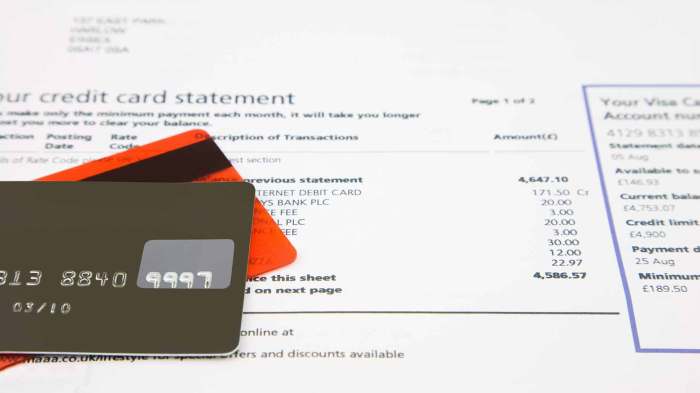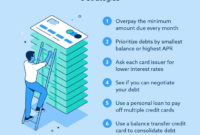Low-interest credit cards offer a unique opportunity for individuals to manage their finances efficiently and effectively. By exploring the world of low-interest credit cards, you’ll discover a wealth of benefits and strategies to make the most of this financial tool.
What are Low-interest Credit Cards?
Low-interest credit cards are a type of credit card that offers a lower annual percentage rate (APR) compared to regular credit cards. These cards are designed to help cardholders save money on interest charges, especially when carrying a balance from month to month.
How Low-interest Credit Cards Differ from Regular Credit Cards
Low-interest credit cards typically have lower APRs, making them a more cost-effective option for those who anticipate carrying a balance on their credit card. In contrast, regular credit cards often come with higher APRs, which can lead to significant interest charges if a balance is not paid in full each month.
Benefits of Using Low-interest Credit Cards
- Lower Interest Charges: One of the main benefits of low-interest credit cards is the reduced interest charges, which can save cardholders money over time.
- Debt Repayment: With a lower APR, it may be easier for cardholders to pay off their credit card debt faster, as more of their payment goes towards the principal balance.
- Financial Flexibility: Low-interest credit cards can provide cardholders with more financial flexibility, allowing them to make purchases and manage their finances without worrying about high-interest charges.
How to Qualify for Low-interest Credit Cards?

To qualify for low-interest credit cards, individuals typically need to meet certain requirements set by credit card companies. One of the most important factors in determining eligibility for these cards is the individual’s credit score. A higher credit score usually results in a better chance of being approved for a low-interest credit card. Here are some key points to consider when trying to qualify for low-interest credit cards:
Credit Score Importance
Maintaining a good credit score is crucial when applying for low-interest credit cards. Credit card companies use credit scores to assess an individual’s creditworthiness and risk level. A higher credit score demonstrates responsible financial behavior and makes individuals more attractive to lenders. To qualify for low-interest credit cards, aim for a credit score in the good to excellent range, typically above 700.
- Ensure timely payments: Paying bills on time is one of the most important factors that contribute to a good credit score. Late payments can significantly lower your score and decrease your chances of qualifying for low-interest credit cards.
- Keep credit utilization low: Credit utilization ratio is the amount of credit you are using compared to your total credit limit. Aim to keep this ratio below 30% to demonstrate responsible credit management.
- Monitor your credit report: Regularly check your credit report for errors or fraudulent activities. Dispute any inaccuracies to maintain a clean credit history.
Pros and Cons of Low-interest Credit Cards
Low-interest credit cards offer a range of advantages and disadvantages for consumers to consider before applying. Understanding the benefits and drawbacks can help individuals make informed decisions regarding their financial choices.
Advantages of Low-interest Credit Cards
- Lower Cost of Borrowing: Low-interest credit cards typically have lower annual percentage rates (APRs), resulting in reduced interest charges on balances carried over from month to month.
- Debt Repayment Assistance: With lower interest rates, cardholders can pay off existing debt more quickly, saving money in the long run.
- Flexible Payment Options: Low-interest credit cards may offer promotional periods with 0% APR, allowing consumers to make large purchases and pay them off over time without accruing interest.
- Improved Credit Score: Responsible use of a low-interest credit card can positively impact an individual’s credit score, leading to better borrowing terms in the future.
Disadvantages of Low-interest Credit Cards
- Qualification Criteria: Some low-interest credit cards require a high credit score for approval, limiting access to individuals with less-than-perfect credit histories.
- Annual Fees: While some low-interest credit cards may have lower interest rates, they could come with annual fees that offset potential savings for cardholders.
- Limited Rewards: Low-interest credit cards may offer fewer rewards or cashback incentives compared to other types of credit cards, potentially reducing the overall value for frequent users.
- Balance Transfer Fees: Transferring balances from high-interest cards to a low-interest credit card often incurs fees, impacting the total cost savings for consumers.
Comparison of Benefits and Drawbacks
- Balance of Costs: Low-interest credit cards provide cost-saving benefits through reduced interest charges, but annual fees and balance transfer fees can offset these savings.
- Financial Discipline: While low-interest credit cards can assist with debt repayment, they also require responsible financial management to avoid accumulating additional debt.
- Rewards vs. Savings: Consumers must weigh the value of rewards and cashback offers against the potential savings from lower interest rates to determine the best card for their financial needs.
Tips for Managing Low-interest Credit Cards Effectively

When it comes to managing low-interest credit cards effectively, there are several strategies and best practices that can help you make the most of these financial tools. By following these tips, you can pay off balances efficiently and maintain a good credit standing.
Pay more than the minimum
- Always strive to pay more than the minimum payment required each month. By doing so, you can reduce the overall interest you pay and pay off your balance faster.
- Focus on paying off higher-interest debt first while making at least minimum payments on low-interest cards.
Set up automatic payments
- Consider setting up automatic payments to ensure you never miss a payment deadline. This can help you avoid late fees and maintain a positive credit history.
- Automating payments can also make it easier to budget for credit card payments each month.
Avoid unnecessary spending
- Avoid using your low-interest credit card for unnecessary purchases to prevent accumulating more debt than you can afford to repay.
- Stick to a budget and only use your credit card for essential expenses to avoid overspending.
Monitor your credit utilization, Low-interest credit cards
- Keep an eye on your credit utilization ratio, which is the amount of credit you’re using compared to your total available credit. Aim to keep this ratio below 30% to maintain a good credit score.
- Consider requesting a credit limit increase if needed to lower your credit utilization ratio.
In conclusion, low-interest credit cards can be a valuable asset in your financial journey, providing you with the flexibility and stability needed to navigate the complexities of modern-day money management. Explore the possibilities and unlock the potential of low-interest credit cards today.
Learn about more about the process of No annual fee credit cards in the field.



